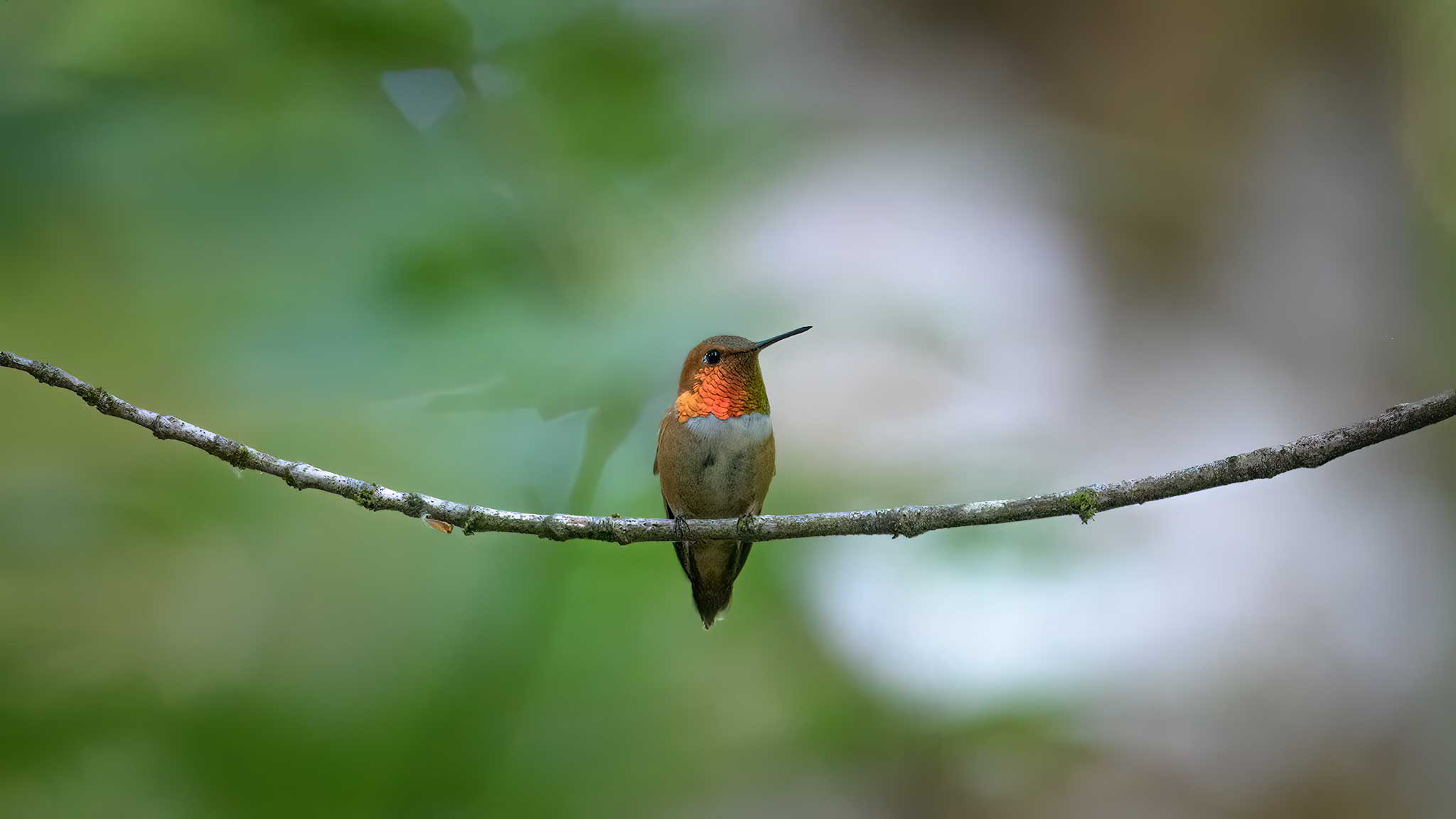Patience, Persistence, and the Perfect Hummingbird Shot
A Quiet Win Close to Home – The Rufous Hummingbird
I want to share a recent little accomplishment. It’s not huge, but it’s one I’m proud of. I finally got a few nice hummingbird photo. A rufous hummingbird.
Lately, I’ve been enjoying a new pastime: photographing birds in my own backyard using my Tamron SP 150-600mm F/5-6.3 Di VC USD G2. It’s become one of my favorite ways to relax. I’ll often set up quietly, stay still, and wait—trying to be as inconspicuous as possible.

Familiar Faces in the Forest
Some of my usual visitors are pretty cooperative. The downy woodpeckers, for instance, aren’t very shy. They stick around long enough for me to get some great shots. The Steller’s Jays are the same—those bright flashes of blue against the trees make for beautiful images.
I’ve also had good luck with other regulars like dark-eyed juncos, robins, varied thrush, and nuthatches. My portfolio now includes some lovely images of these backyard residents.

Two Birds That Got Away
Still, two particular birds had eluded my camera for far too long.
The first is the pileated woodpecker. They love to tease me with their wild, jungle-like calls from the treetops—but they never seem to land where I can photograph them.
The second, surprisingly, is the rufous hummingbird. These tiny native birds migrate up to 3,000 miles between their nesting grounds in Alaska and Canada and their winter homes in Mexico. Pretty incredible for something so small.
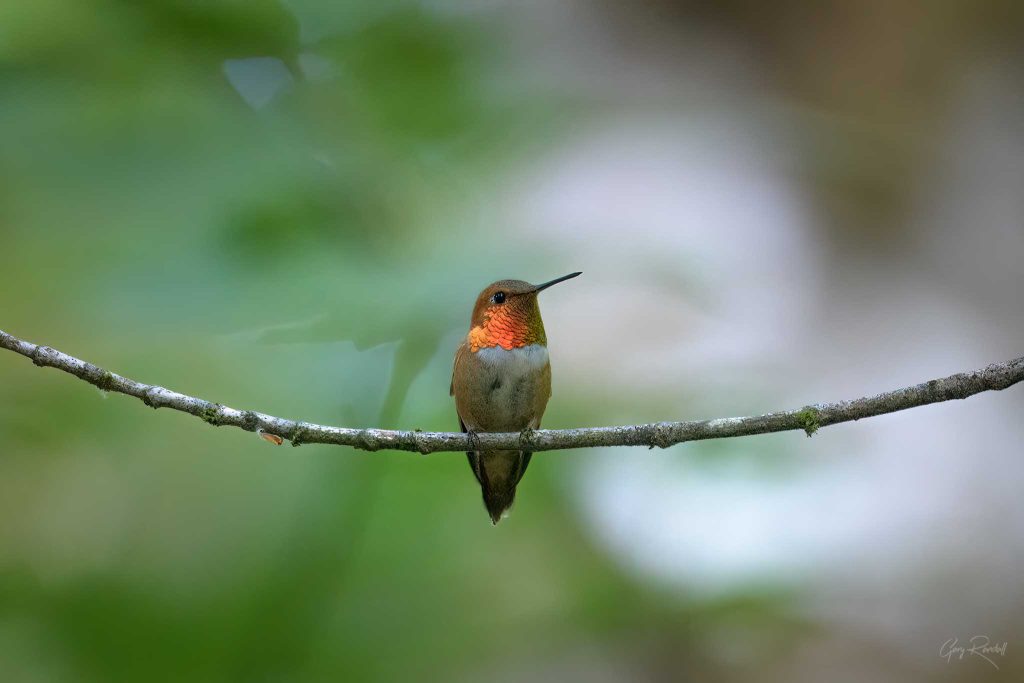
Small Bird, Big Challenge
Although rufous hummingbirds are common here in the summer, they are not easy to photograph—especially in the way I wanted. I wasn’t after a shot at the feeder. I wanted something more authentic: a photo of a hummingbird in its natural setting.
That meant two challenges. First, I needed to capture one in sharp focus despite their small size and lightning speed. Second, I wanted a clean background—no feeders, just Nature.
Speed Demons with Wings
These birds are only about three inches long and weigh just 3–4 grams. They beat their wings up to 62 times per second and can fly at speeds up to 26 miles per hour—sometimes diving at speeds over 50.
Even when one hovered nearby, I couldn’t move fast enough. By the time I raised the camera and started to focus, they were gone. Over and over, I tried. And over and over, I missed the shot—especially if the bird wasn’t near the feeder.
I knew I had to change my approach. I just wasn’t sure how.
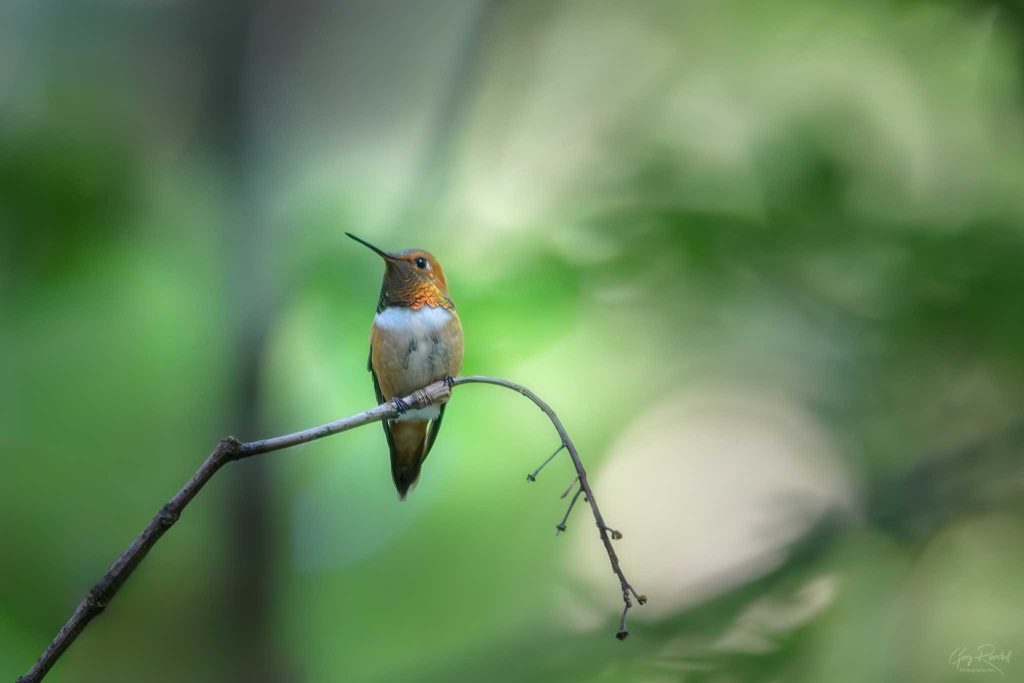
A Breakthrough in the Maple Tree
Then, the other day, something clicked.
While I was watching one of the hummingbirds fly away, I noticed something. A few seconds after disappearing, the buzzing sound stopped. I followed the direction it went, scanning the branches—until I finally spotted it sitting on a bare maple branch not far away.
Even better, I noticed that it kept returning to the same perch.
I quickly set up my camera, locked in my focus, and waited.
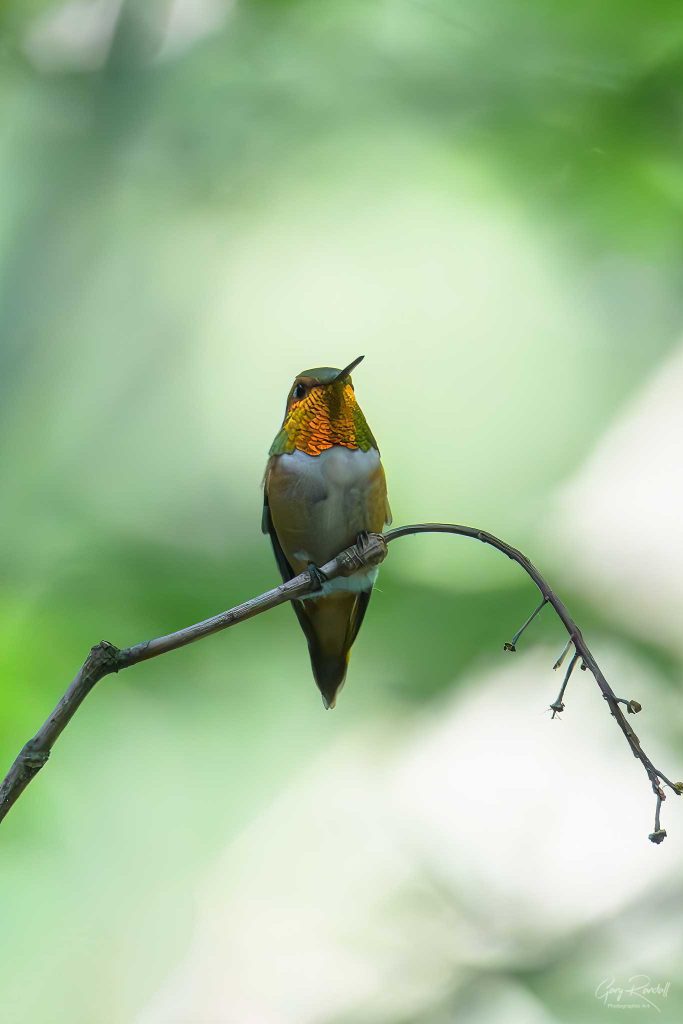
The Moment I’d Been Waiting For
Sure enough, the bird came back. This time, I was ready.
I captured several beautiful photos of it resting in the tree. When the light hit just right, its iridescent gorget shimmered with rich color. It turned its head slightly and flashed that brilliant, fiery glow in the sun.
It was one of those moments that makes all the waiting worth it.
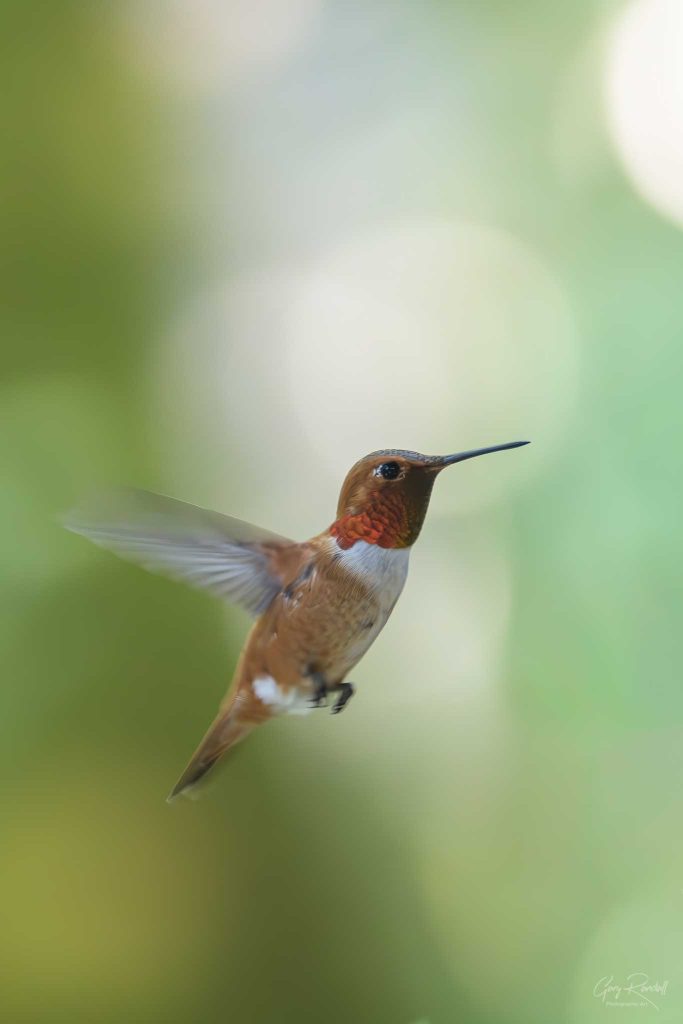
Lessons from a Rufous Hummingbird
Looking back, I see it as another reminder that photography—especially of wildlife—is so often about patience and persistence. You wait, you watch, you fail, and then eventually… something clicks.
I now have some beautiful new photos of the rufous hummingbird to add to my collection. More importantly, I got to experience the quiet joy of finally connecting with a subject I’ve been chasing for years

